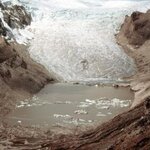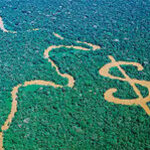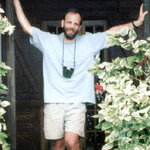Science Education & Policy

The American Association for the Advancement of Science (AAAS) today released a new video as well as the first consensus statement of its board of directors regarding global climate change during a free public town hall meeting in San Francisco, California.
The town hall meeting, part of the 2007 AAAS Annual Meeting, was organized by AAAS in collaboration with three leading U.S. education organizations -- the California Science Teachers Association, the National Science Teachers Association, and the United Educators of San Francisco (representing the National Education Association and the…

The notion that more information about the science of human-caused climate change will spur effective problem solving by American society is just flat wrong, according to a University of Colorado at Boulder climate policy analyst.
Even the 2007 Intergovernmental Panel on Climate Change report released Feb. 2, which painted a bleak global portrait of rising seas and temperatures due to human activity, is unlikely by itself to lead to meaningful mitigation or adaptation anytime soon, said Lisa Dilling of CU-Boulder’s Cooperative Institute for Research in Environmental Sciences. “Most people…

Here is some news that will certainly get on people's nerves: In a study to be published in the March 2007 issue of The FASEB Journal, scientists from East Carolina University report that a key molecular mechanism, RNA interference (RNAi), plays a role in the regeneration and repair of periphery nerves, which are the nerves located outside of the brain and spinal column. This research may lead to new therapies that manipulate RNAi to treat people with damaged nerves resulting from degenerative disorders and injury.
Andrew Z. Fire of Stanford University and Craig C. Mello of the University of…

While previous biomedical research studies have found that genetics and race increase risk for some diseases, a new look into how researchers study genetic triggers of type 2 diabetes suggests that defining race remains an inexact science, with social and historic facts mixing with biology throughout the research process.
The new study by a UC Irvine anthropologist calls into question not only how race-specific information is being gathered and interpreted by the medical community, but how it is presented to the public through media and pharmaceutical marketing.
Anthropologist Michael…

While I'm safely removed from the dating pool, Stephanie Street is not (is this perhaps a pseudonym?). She phoned in a Valentine's Day question to the PRI radio program Fair Game, and won the dubious honor of chatting with me and the host on air (tonight, online at www.morefairgame.org by 9:00pm) and thus having her pseudonym forever attached to this equation, heretofore known as The Manometer. Her dilemma was the choice between two proposed Valentine's Day dates—one eight years older, mature and stable and another two years younger, brash and exciting (does this sound like the plot of a…

Two of Greenland's largest glaciers shrank dramatically and dumped twice as much ice into the sea during a period of less than a year between 2004 and 2005. And then, less than two years later, they returned to near their previous rates of discharge.
The variability over such a short time, reported online Feb. 9 on Science magazine's Science Express, underlines the problem in assuming that glacial melting and sea level rise will necessarily occur at a steady upward trajectory, according to lead author Ian Howat, a post-doctoral researcher with the University of Washington's Applied Physics…

Being a green consumer is hard work, according to new research funded by the Economic and Social Research Council (ESRC). The study highlights a need for more practical help and incentives for green consumers, if we are to achieve a more sustainable society.
The University of Leeds-led study found that consumers who try to live a sustainable lifestyle have difficulty deciding which product to buy. "Consumers find that being green or ethical is a very hard, time consuming, and emotional experience," says Dr William Young. Apart from the usual issues such as price, reliability, and colour,…

In The Sunday Times Nigel Calder writes:
When politicians and journalists declare that the science of global warming is settled, they show a regrettable ignorance about how science works. We were treated to another dose of it recently when the experts of the Intergovernmental Panel on Climate Change issued the Summary for Policymakers that puts the political spin on an unfinished scientific dossier on climate change due for publication in a few months’ time. They declared that most of the rise in temperatures since the mid-20th century is very likely due to man-made greenhouse…

Archaeologists are now turning to forensic crime lab techniques to hunt for dyes, paint, and other decoration in prehistoric textiles.
Although ancient fabrics can offer clues about prehistoric cultures, often their colors are faded, patterns dissolved, and fibers crumbling. Forensic photography can be used as an inexpensive and non-destructive tool to analyze these artifacts more efficiently, according to new Ohio State University research.
An image of a Hopewell textile retrieved from Ohio Seip burial mounds in southern Ohio using ultraviolet reflectance. (From photos by Christel Baldia…

Temperatures are rising on Earth, which is heating up the debate over global warming and the future of our planet, but what may be needed most to combat global warming is a greater focus on adapting to our changing planet, says a team of science policy experts writing in this week's Nature magazine.
While many consider it taboo, adaptation to global climate change needs to be recognized as just as important as "mitigation," or cutting back, of greenhouse gases humans pump into Earth's atmosphere. The science policy experts, writing in the Feb. 8, 2007 issue of Nature, say adapting to the…